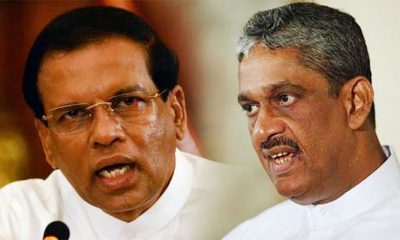Midweek Review
Does SF’s unexpected move portend confrontation?
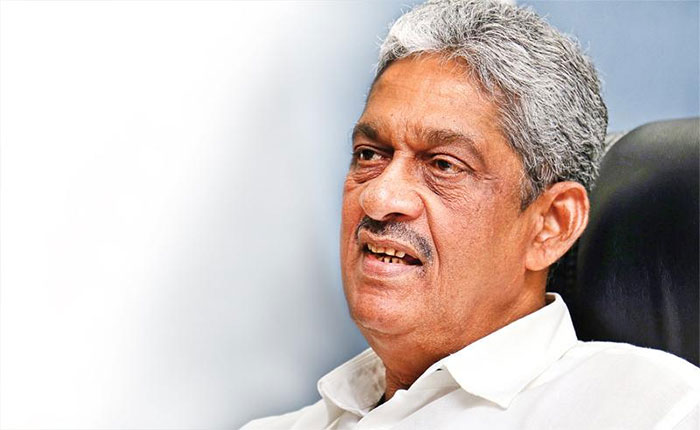
During a violent protest campaign to oust President Gotabaya Rajapaksa last year, Field Marshal Sarath Fonseka threw his weight behind the project. Fonseka was the only parliamentarian allowed to address large crowds as they gathered near the President’s House on the morning of 09 July, 2022. The Field Marshal didn’t mince his words when he urged the military not to crack down on violent public protests, obviously staged by outside forces with financial and other resources, to oust the then government. Overwhelmed by the massive gathering, the Army quietly abandoned the President’s House, paving the way for Ranil Wickremesinghe’s succession, on whose orders the military then swiftly cleared the President’s House, Presidential Secretariat and other government buildings. Now Sarath Fonseka wants to take on the Wickremesinghe-Rajapaksa government. The People’s Revolution is meant to inspire a countrywide protest campaign. But the task seems difficult in the absence of an environment conducive for such a project without the clandestine backing of outside elements.
By Shamindra Ferdinando
Field Marshal Sarath Fonseka, MP, recently declared his intention to chart a new political course amidst continuing turmoil in the Opposition. The war-winning Army Chief, 72, on 11 August, launched a campaign of his own, at the expense of the main Opposition Samagi Jana Balawegaya (SJB), as further differences emerged in the breakaway UNP faction. How could Gampaha District SJB lawmaker Fonseka, the current Chairman of the party, initiate a protest campaign, dubbed ‘People’s Revolution,’ targeting waste, corruption, irregularities and mismanagement?
The Sinha Regiment veteran declared that the national economy couldn’t be restored, under any circumstances, unless the utterly corrupt governance system was done away with.
The protest, held outside Viharamahadevi Park, drew a mixed crowd. The deployment of a sizable police contingent, backed by anti-riot squads and water cannons, was meant as a warning sign not to test the government’s will. The writer quite comfortably felt that the protesting group didn’t have the intention of blocking the road, or marching on any government building. Some displayed placards demanding proper implementation of the ‘Aswesuma’ social security scheme, leave EPF and ETF out of the debt-restructuring process, and media freedom.
The former Yahapalana minister Fonseka seemed alone in that crowd in the absence of any other known face. The SJB Chairman appeared to have lost faith in his own party, struggling to counter President Ranil Wickremesinghe. Regardless of his own party being reduced to just one National List slot (Wajira Abeywardena) at the last parliamentary election, Wickremesinghe has managed to consolidate his position in Parliament.
MP Fonseka’s move should be examined taking into consideration the presidential election due next year. Would parliamentarian Fonseka consider himself as a candidate at the next presidential election? Having served as Regional Development, as well as Minister of Wildlife and Sustainable Development, during the Yahapalana administration (January 2015-November 2019), is he really interested in another go at the presidency. Or will it be used as a bargaining chip to join the increasingly confident possible UNP-SLPP future government. Remember the old adage there are no permanent friends or permanent enemies in politics. Garadihewa, as his name denotes, is from a true warrior stock, and, with a sixth sense in battle, he no doubt proved his mettle by leading the fight to defeat the world’s most ruthless terror outfit against the advice of all pundits, and carried out the war even after the Tigers nearly killed him in his own den with a suicide bomber, who inflicted life threatening injuries on him.
In our humble opinion, may be Fonseka should have quit when he was far ahead with an almost unblemished record as a General. Now this once true lion, having jumped headlong into the political cesspit, is no longer fighting brave tigers, but many more two legged hyenas, jackals and whatnot.
Similarly, see what has happened to our erstwhile cunning comrades in the JVP, FSP and their trade union cabal. Remember they were ready to lay down their lives for the country, but are now more like kittens as if on cue from Uncle Sam, despite New Delhi and Washington clearly running roughshod over us. Even Comrade Kumar Gunaratnam seems to be enjoying the best of both worlds in Australia and Sri Lanka. We should not also forget the NGO quislings, who clearly know on which side their bread is buttered.
The protest at Viharamahadevi Park gravely underscored the war veteran’s dissatisfaction at the way the SJB is addressing the burning issues. The brief but fiery speech delivered there meant that he didn’t have faith in the top management of the party. It would be pertinent to mention that in the run-up to the last presidential election, in 2019, Fonseka, on numerous occasions, declared that he was prepared to contest that election if Ranil Wickremesinghe was not in the race. Then Speaker Karu Jayasuriya, too, indicated his desire and was chosen by a group of academics as the best challenger to SLPP candidate Gotabaya Rajapaksa. But MP Fonseka’s overtures were ignored. Maybe Fonseka felt he could contest the presidential poll.
Gardihewa Sarath Chandralal Fonseka contested the January 2010 presidential election as the common candidate. Having spearheaded the Army-led all-out offensive to defeat Tiger terrorism, during a three-year-long campaign, backed by the Navy and Air Force, Fonseka declared his intention to contest the first national level election, after Sri Lanka’s triumph over the LTTE, in May 2009. Fonseka had the backing of a US-led coalition that consisted of the UNP, TNA, JVP and the SLMC. There hadn’t been a previous instance of the UNP and JVP forming a political alliance. In their haste to bring the Rajapaksa presidency to an end, they quite conveniently forgot that their partner, the TNA, served the separatist LTTE agenda until the very end. They disregarded how the TNA recognized the LTTE as the sole representative of the Tamil speaking people in 2001 and set the stage for the final showdown, eight years later.
But, Sri Lanka’s greatest ever Army Commander couldn’t deprive Mahinda Rajapaksa of a second consecutive term. Rajapaksa polled 1.8 mn votes more than Fonseka, though the latter comfortably secured all the predominantly Tamil speaking districts, including Digamadulla, thanks to the TNA’s support. The SLMC also played a crucial role in the East on his behalf.
The then General Fonseka’s performance in the Northern and Eastern electoral districts proved beyond any doubt that unsubstantiated war crimes accusations, propagated by interested parties, didn’t hold water.
SJB’s woes
MP Fonseka seems to have distanced himself from the SJB, struggling to cope up with defections and its failure to reach consensus on a common strategy. The elevation of Ranil Wickremesinghe as the President, in July last year, to complete the remainder of Gotabaya Rajapaksa’s five-year term, has undermined not only the SJB but the SLPP that elected him.
Wickremesinghe lured SJB MPs Manusha Nanayakkara (Galle district) and Harin Fernando (National List) to accept Cabinet portfolios in May 2022. They switched sides immediately after Wickremesinghe accepted the premiership from President Gotabaya Rajapaksa. In spite of their treachery, the government couldn’t entice other members of the SJB parliamentary group. Nanayakkara and Fernando, having repeatedly accused Gotabaya Rajapaksa of being the direct beneficiary of the April 2019 Easter Sunday carnage, joined his government without qualms. In the wake of Gotabaya Rajapaksa being forced to flee the country, due to a well-organized violent campaign to oust him, with massive protests, while law enforcers merely stood by idly, in July 2020, Nanayakkara and Fernando joined Wickremesinghe’s Cabinet.
MP Fonseka has declared his intention to contemplate a different path in the wake of two more elected on the SJB ticket, namely Kumara Welgama (Kalutara district) and Patali Champila Ranawaka (Colombo district) seeking to chart their own courses. Welgama and Ranawaka launched the Nawa Lanka Nidahas Pakshaya and the United Republican Front in 2020 and May this year, respectively.
The SJB won 54 seats, including seven National List slots, at the parliamentary election. Even before the SJB settled down, as the main Opposition party, one of its NL members, first time entrant to Parliament, Diana Gamage, switched her allegiance to the SLPP. Diana Gamage didn’t even bother to hide her contempt for the top SJB leadership when she declared her support to the controversial 20th Amendment to the Constitution, enacted in late October 2020. She simply dismissed the SJB’s decision to vote against that Amendment, meant to further strengthen the executive, as irrelevant. Further deterioration of the SJB parliamentary group can be disastrous as Wickremesinghe steps up pressure on the breakaway faction, ahead of the presidential election.
Fonseka switched allegiance to Sajith Premadasa immediately after the UNP split that followed SP’s heavy defeat at the presidential election. Fonseka contested the last general election on the SJB ticket, amidst simmering controversy over the circumstances under which the then Election Commission allowed the Ape Jathika Peramuna to be named as Samagi Jana Balawegaya in 2020. Diana Gamage’s husband, Senaka de Silva formerly of the Army, had been a one-time influential member of General Fonseka’s staff when he contested the 2010 presidential poll. The cashiered junior Army officer had been the leader of Ape Jathika Peramuna at the time the breakaway UNP faction, under Sajith Premadasa’s leadership, negotiated for the taking over of that party. In the wake of MP Diana Gamage voting for the 20th Amendment, a major issue erupted after the SJB demanded an explanation from her as to why she voted for Gotabaya Rajapaksa’s amendment, regardless of the party decision to move against it. Diana Gamage threatened to take back the party. The bone of contention is whether Diana Gamage could have taken things for granted just because her husband gave up his party for the benefit of Sajith Premadasa’s group.
SP declares his prez candidature
In May this year, the SJB hurriedly named its leader, Sajith Premadasa, as its presidential candidate. The party announced the decision on May 16, following a meeting of its decision-making Working Committee. The announcement was made in the wake of speculation that President Wickremesinghe contemplated introducing a simple amendment to pave the way for presidential election. Declaring that there was no one they could have faith in, except party leader Sajith Premadasa, former UNP MP Sujeewa Senasinghe proposed their leader as the presidential candidate. One-time State Minister and SJB Gampaha District MP Harshana Rajakaruna made a joint proposal in this regard that received the unanimous approval of the Working Committee. A one-page statement, issued by the SJB soon after the meeting, said that MPs S.M. Marikkar and Chamindra Wijesiri, Rehan Jaywickrema and President’s Counsel Upul Jayasuriya and several others appreciated the Working Committee decision.
Did the SJB at least unofficially consult other political parties, which contested under its symbol at the last parliamentary poll, before the announcement on the 2024 presidential candidate was made? The SJB cannot afford to ignore efforts made by the SLMC and the Tamil Progressive Alliance (TPA) to pave the way for a consensus between the SJB and President Wickremesinghe. The SLMC and three political parties, represented in the TPA, contested the last general election on the SJB ticket, therefore the main Opposition party should be mindful of the interests of its constituents. Its failure to address the concerns of partners, as well as individual members, can be quite catastrophic ahead of the next presidential election.
President Wickremesinghe stands to gain by the SJB’s shoddy approach to the next presidential election, followed by parliamentary polls. Undeterred by being reduced to just one seat in the 225-member Parliament, the UNP leader seemed quite convinced of his chances at the next presidential election with the backing of a section of the SLPP parliamentary group. A debilitating SLPP split is now almost certain with Power and Energy Minister Kanchana Wijesekera openly declaring his support for the UNP leader. The Matara district parliamentarian is on record as having said that the majority of the SLPP parliamentary group supported President Wickremesinghe’s candidature. Lawmaker Wijesekera has repeatedly declared that though the UNP and the SLPP currently carried out meetings separately, a tie-up between the SLPP and President Wickremesinghe is inevitable.
If Wijesekera is proved right, the main contenders at the next presidential election would be UNP leader Ranil Wickremesinghe and the former UNP Deputy Leader Sajith Premadasa. If that happened, the electors would face the challenging task of choosing one as essentially the two leaders’ economic strategies won’t clash. Would Wickremesinghe’s current policies be acceptable to the SLPP? Perhaps the UNP leader is not looking at a formal agreement with the SLPP but a consensus with a sizable breakaway group ready for its chances with the UNP leader. Whatever the bombastic declarations made by Wickremesinghe’s depleted group, the UNP hadn’t been able to engineer crossovers from the SJB as intended. Over a year after receiving the presidency, Wickremesinghe hadn’t been able to win over a single SJB MP. Manusha Nanayakkara and Harin Fernando switched allegiance to the government at a time Gotabaya Rajapaksa served as the President. Facts are stubborn. In fact, the President totally depends on the SLPP for his survival in Parliament. Their relations are in deepening crisis due to the inordinate delay on the part of the President to accommodate SLPP nominees in his Cabinet. That particular SLPP request has been on the backburner for over 11 months. That is the truth.
With the JVP-led Jathika Jana Balawegaya (JJB) certain to field a candidate of its own, the rebel SLPP group (Prof. G.L. Peiris-DA [Dallas Alahapperuma] led 12-member group) plus Uttara Lanka Sabhagaya, too, would be compelled to contest, thereby causing further setback to the Opposition effort. The decision-makers will have to examine two key issues: (1) can there be an understanding among the GL Peiris-DA led group and Uttara Lanka Sabhagaya? And (2) is there a likelihood of an alliance involving the SJB, SLPP rebels, including Uththara Lanka Sabhagaya?
Tough times
Having lost badly to Mahinda Rajapaksa at the 2010 presidential election, Fonseka sought to contest the general election on the UNP ticket on his terms. Wickremesinghe however swiftly rejected Fonseka’s move. That prompted Fonseka to contest the election, under the JVP-led Democratic National Alliance (DNA) ticket. It was nothing but an odd marriage of convenience. The DNA managed to secure seven seats. The DNA parliamentary group consisted of Sarath Fonseka, Arjuna Ranatunga (no longer in active politics), Tiran Alles (National List/the incumbent Public Security Minister) and four JVPers, including incumbent leader Anura Kumara Dissanayake. The subsequent arrest of Fonseka and denial of his parliamentary seat under questionable circumstances prompted the war hero to form the Democratic Party aka DP. That party suffered a catastrophic setback in its debut at the 2015 general election with its leader Sarath Fonseka failing to get elected from Colombo. The DP couldn’t poll 30,000 votes countrywide. Fonseka’s party couldn’t at least secure a National List seat and was relegated to history. However, Yahapalana Premier Ranil Wickremesinghe rescued the former Army Chief by accommodating him on his National List. Fonseka was brought into Parliament on the UNP National List, in early 2016, and accommodated in the Cabinet of Ministers, though Wickremesinghe simply ignored calls to appoint him the Law and Order Minister.
Could Fonseka have averted the 2019 Easter Sunday attack if he was tasked with the Law and Order Ministry? At the time of the Easter Sunday suicide attacks, Ranjith Madduma Bandara served as the Law and Order Minister. Fonseka suffered due to his running disputes with the then President Maithripala Sirisena who strongly opposed giving that particular portfolio to the wartime Army Chief under any circumstances. They failed to iron out differences though Sarath Fonseka was granted the Field Marshal’s rank during Sirisena’s tenure as the President. Sirisena owed a public apology for his failure to award the same to Admiral Wasantha Karannagoda and Air Marshal Roshan Goonatilleke.
The 2019 presidential poll campaign saw UNP candidate Sajith Premadasa declaring Fonseka as the Defence Minister, if he ended up victorious.
Features
Handunnetti and Colonial Shackles of English in Sri Lanka
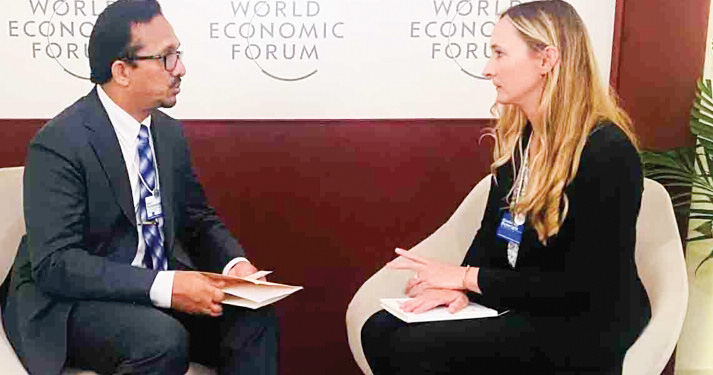
“My tongue in English chains.
I return, after a generation, to you.
I am at the end
of my Dravidic tether
hunger for you unassuaged
I falter, stumble.”
– Indian poet R. Parthasarathy
 When Minister Sunil Handunnetti addressed the World Economic Forum’s ‘Is Asia’s Century at Risk?’ discussion as part of the Annual Meeting of the New Champions 2025 in June 2025, I listened carefully both to him and the questions that were posed to him by the moderator. The subsequent trolling and extremely negative reactions to his use of English were so distasteful that I opted not to comment on it at the time. The noise that followed also meant that a meaningful conversation based on that event on the utility of learning a powerful global language and how our politics on the global stage might be carried out more successfully in that language was lost on our people and pundits, barring a few commentaries.
When Minister Sunil Handunnetti addressed the World Economic Forum’s ‘Is Asia’s Century at Risk?’ discussion as part of the Annual Meeting of the New Champions 2025 in June 2025, I listened carefully both to him and the questions that were posed to him by the moderator. The subsequent trolling and extremely negative reactions to his use of English were so distasteful that I opted not to comment on it at the time. The noise that followed also meant that a meaningful conversation based on that event on the utility of learning a powerful global language and how our politics on the global stage might be carried out more successfully in that language was lost on our people and pundits, barring a few commentaries.
Now Handunnetti has reopened the conversation, this time in Sri Lanka’s parliament in November 2025, on the utility of mastering English particularly for young entrepreneurs. In his intervention, he also makes a plea not to mock his struggle at learning English given that he comes from a background which lacked the privilege to master the language in his youth. His clear intervention makes much sense.
The same ilk that ridiculed him when he spoke at WEF is laughing at him yet again on his pronunciation, incomplete sentences, claiming that he is bringing shame to the country and so on and so forth. As usual, such loud, politically motivated and retrograde critics miss the larger picture. Many of these people are also among those who cannot hold a conversation in any of the globally accepted versions of English. Moreover, their conceit about the so-called ‘correct’ use of English seems to suggest the existence of an ideal English type when it comes to pronunciation and basic articulation. I thought of writing this commentary now in a situation when the minister himself is asking for help ‘in finding a solution’ in his parliamentary speech even though his government is not known to be amenable to critical reflection from anyone who is not a party member.
The remarks at the WEF and in Sri Lanka’s parliament are very different at a fundamental level, although both are worthy of consideration – within the realm of rationality, not in the depths of vulgar emotion and political mudslinging.
The problem with Handunnetti’s remarks at WEF was not his accent or pronunciation. After all, whatever he said could be clearly understood if listened to carefully. In that sense, his use of English fulfilled one of the most fundamental roles of language – that of communication. Its lack of finesse, as a result of the speaker being someone who does not use the language professionally or personally on a regular basis, is only natural and cannot be held against him. This said, there are many issues that his remarks flagged that were mostly drowned out by the noise of his critics.
Given that Handunnetti’s communication was clear, it also showed much that was not meant to be exposed. He simply did not respond to the questions that were posed to him. More bluntly, a Sinhala speaker can describe the intervention as yanne koheda, malle pol , which literally means, when asked ‘Where are you going?’, the answer is ‘There are coconuts in the bag’.
He spoke from a prepared text which his staff must have put together for him. However, it was far off the mark from the questions that were being directly posed to him. The issue here is that his staff appears to have not had any coordination with the forum organisers to ascertain and decide on the nature of questions that would be posed to the Minister for which answers could have been provided based on both global conditions, local situations and government policy. After all, this is a senior minister of an independent country and he has the right to know and control, when possible, what he is dealing with in an international forum.
This manner of working is fairly routine in such international fora. On the one hand, it is extremely unfortunate that his staff did not do the required homework and obviously the minister himself did not follow up, demonstrating negligence, a want for common sense, preparedness and experience among all concerned. On the other hand, the government needs to have a policy on who it sends to such events. For instance, should a minister attend a certain event, or should the government be represented by an official or consultant who can speak not only fluently, but also with authority on the subject matter. That is, such speakers need to be very familiar with the global issues concerned and not mere political rhetoric aimed at local audiences.
Other than Handunnetti, I have seen, heard and also heard of how poorly our politicians, political appointees and even officials perform at international meetings (some of which are closed door) bringing ridicule and disastrous consequences to the country. None of them are, however, held responsible.
Such reflective considerations are simple yet essential and pragmatic policy matters on how the government should work in these conditions. If this had been undertaken, the WEF event might have been better handled with better global press for the government. Nevertheless, this was not only a matter of English. For one thing, Handunnetti and his staff could have requested for the availability of simultaneous translation from Sinhala to English for which pre-knowledge of questions would have been useful. This is all too common too. At the UN General Assembly in September, President Dissanayake spoke in Sinhala and made a decent presentation.
The pertinent question is this; had Handunetti had the option of talking in Sinhala, would the interaction have been any better? That is extremely doubtful, barring the fluency of language use. This is because Handunnetti, like most other politicians past and present, are good at rhetoric but not convincing where substance is concerned, particularly when it comes to global issues. It is for this reason that such leaders need competent staff and consultants, and not mere party loyalists and yes men, which is an unfortunate situation that has engulfed the whole government.
What about the speech in parliament? Again, as in the WEF event, his presentation was crystal clear and, in this instance, contextually sensible. But he did not have to make that speech in English at all when decent simultaneous translation services were available. In so far as content was concerned, he made a sound argument considering local conditions which he knows well. The minister’s argument is about the need to ensure that young entrepreneurs be taught English so that they can deal with the world and bring investments into the country, among other things. This should actually be the norm, not only for young entrepreneurs, but for all who are interested in widening their employment and investment opportunities beyond this country and in accessing knowledge for which Sinhala and Tamil alone do not suffice.
As far as I am concerned, Handunetti’s argument is important because in parliament, it can be construed as a policy prerogative. Significantly, he asked the Minister of Education to make this possible in the educational reforms that the government is contemplating.
He went further, appealing to his detractors not to mock his struggle in learning English, and instead to become part of the solution. However, in my opinion, there is no need for the Minister to carry this chip on his shoulder. Why should the minister concern himself with being mocked for poor use of English? But there is a gap that his plea should have also addressed. What prevented him from mastering English in his youth goes far deeper than the lack of a privileged upbringing.
The fact of the matter is, the facilities that were available in schools and universities to learn English were not taken seriously and were often looked down upon as kaduwa by the political spectrum he represents and nationalist elements for whom the utilitarian value of English was not self-evident. I say this with responsibility because this was a considerable part of the reality in my time as an undergraduate and also throughout the time I taught in Sri Lanka.
Much earlier in my youth, swayed by the rhetoric of Sinhala language nationalism, my own mastery of English was also delayed even though my background is vastly different from the minister. I too was mocked, when two important schools in Kandy – Trinity College and St. Anthony’s College – refused to accept me to Grade 1 as my English was wanting. This was nearly 20 years after independence. I, however, opted to move on from the blatant discrimination, and mastered the language, although I probably had better opportunities and saw the world through a vastly different lens than the minister. If the minister’s commitment was also based on these social and political realities and the role people like him had played in negating our English language training particularly in universities, his plea would have sounded far more genuine.
If both these remarks and the contexts in which they were made say something about the way we can use English in our country, it is this: On one hand, the government needs to make sure it has a pragmatic policy in place when it sends representatives to international events which takes into account both a person’s language skills and his breadth of knowledge of the subject matter. On the other hand, it needs to find a way to ensure that English is taught to everyone successfully from kindergarten to university as a tool for inclusion, knowledge and communication and not a weapon of exclusion as is often the case.
This can only bear fruit if the failures, lapses and strengths of the country’s English language teaching efforts are taken into cognizance. Lamentably, division and discrimination are still the main emotional considerations on which English is being popularly used as the trolls of the minister’s English usage have shown. It is indeed regrettable that their small-mindedness prevents them from realizing that the Brits have long lost their long undisputed ownership over the English language along with the Empire itself. It is no longer in the hands of the colonial masters. So why allow it to be wielded by a privileged few mired in misplaced notions of elitism?
Features
Finally, Mahinda Yapa sets the record straight

Clandestine visit to Speaker’s residence:
Finally, former Speaker Mahinda Yapa Abeywardena has set the record straight with regard to a controversial but never properly investigated bid to swear in him as interim President. Abeywardena has disclosed the circumstances leading to the proposal made by external powers on the morning of 13 July, 2022, amidst a large scale staged protest outside the Speaker’s official residence, situated close to Parliament.
Lastly, the former parliamentarian has revealed that it was then Indian High Commissioner, in Colombo, Gopal Baglay (May 2022 to December 2023) who asked him to accept the presidency immediately. Professor Sunanda Maddumabandara, who served as Senior Advisor (media) to President Ranil Wickremesinghe (July 2022 to September 2024), disclosed Baglay’s direct intervention in his latest work, titled ‘Aragalaye Balaya’ (Power of Aragalaya).
Prof. Maddumabandara quoted Abeywardena as having received a startling assurance that if he agreed to accept the country’s leadership, the situation would be brought under control, within 45 minutes. Baglay had assured Abeywardena that there is absolutely no harm in him succeeding President Gotabaya Rajapaksa, in view of the developing situation.
The author told the writer that only a person who had direct control over the violent protest campaign could have given such an assurance at a time when the whole country was in a flux.
One-time Vice Chancellor of the Kelaniya University, Prof. Maddumabandara, launched ‘Aragalaye Balaya’ at the Sri Lanka Foundation on 20 November. In spite of an invitation extended to former President Gotabaya Rajapaksa, the ousted leader hadn’t attended the event, though UNP leader Ranil Wickremesinghe was there. Maybe Gotabaya felt the futility of trying to expose the truth against evil forces ranged against them, who still continue to control the despicable agenda.
Obviously, the author has received the blessings of Abeywardena and Wickremesinghe to disclose a key aspect in the overall project that exploited the growing resentment of the people to engineer change of Sri Lankan leadership.
The declaration of Baglay’s intervention has contradicted claims by National Freedom Front (NFF) leader Wimal Weerawansa (Nine: The hidden story) and award-winning writer Sena Thoradeniya (Galle Face Protest: System change for anarchy) alleged that US Ambassador Julie Chung made that scandalous proposal to Speaker Abeywardena. Weerawansa and Thoradeniya launched their books on 25 April and 05 July, 2023, at the Sri Lanka Foundation and the National Library and Documentation Services Board, Independence Square, respectively. Both slipped in accusing Ambassador Chung of making an abortive bid to replace Gotabaya Rajapaksa with Mahinda Yapa Abeywardena.
Ambassador Chung categorically denied Weerawansa’s allegation soon after the launch of ‘Nine: The hidden story’ but stopped short of indicating that the proposal was made by someone else. Chung had no option but to keep quiet as she couldn’t, in response to Weerawansa’s claim, have disclosed Baglay’s intervention, under any circumstances, as India was then a full collaborator with Western designs here for its share of spoils. Weerawansa, Thoradeniya and Maddumabandara agree that Aragalaya had been a joint US-Indian project and it couldn’t have succeeded without their intervention. Let me reproduce the US Ambassador’s response to Weerawansa, who, at the time of the launch, served as an SLPP lawmaker, having contested the 2020 August parliamentary election on the SLPP ticket.
“I am disappointed that an MP has made baseless allegations and spread outright lies in a book that should be labelled ‘fiction’. For 75 years, the US [and Sri Lanka] have shared commitments to democracy, sovereignty, and prosperity – a partnership and future we continue to build together,” Chung tweeted Wednesday 26 April, evening, 24 hours after Weerawansa’s book launch.
Interestingly, Gotabaya Rajapaksa has been silent on the issue in his memoirs ‘The Conspiracy to oust me from Presidency,’ launched on 07 March, 2024.
What must be noted is that our fake Marxists, now entrenched in power, were all part and parcel of Aragalaya.
A clandestine meeting
Abeywardena should receive the appreciation of all for refusing to accept the offer made by Baglay, on behalf of India and the US. He had the courage to tell Baglay that he couldn’t accept the presidency as such a move violated the Constitution. In our post-independence history, no other politician received such an offer from foreign powers. When Baglay stepped up pressure, Abeywardena explained that he wouldn’t change his decision.
Maddumabandara, based on the observations made by Abeywardena, referred to the Indian High Commissioner entering the Speaker’s Official residence, unannounced, at a time protesters blocked the road leading to the compound. The author raised the possibility of Baglay having been in direct touch with those spearheading the high profile political project.
Clearly Abeywardena hadn’t held back anything. The former Speaker appeared to have responded to those who found fault with him for not responding to allegations, directed at him, by revealing everything to Maddumabandara, whom he described in his address, at the book launch, as a friend for over five decades.
At the time, soon after Baglay’s departure from the Speaker’s official residence, alleged co-conspirators Ven. Omalpe Sobitha, accompanied by Senior Professor of the Sinhala Faculty at the Colombo University, Ven. Agalakada Sirisumana, health sector trade union leader Ravi Kumudesh, and several Catholic priests, arrived at the Speaker’s residence where they repeated the Indian High Commissioner’s offer. Abeywardena repeated his previous response despite Sobitha Thera acting in a threatening manner towards him to accept their dirty offer. Shouldn’t they all be investigated in line with a comprehensive probe?
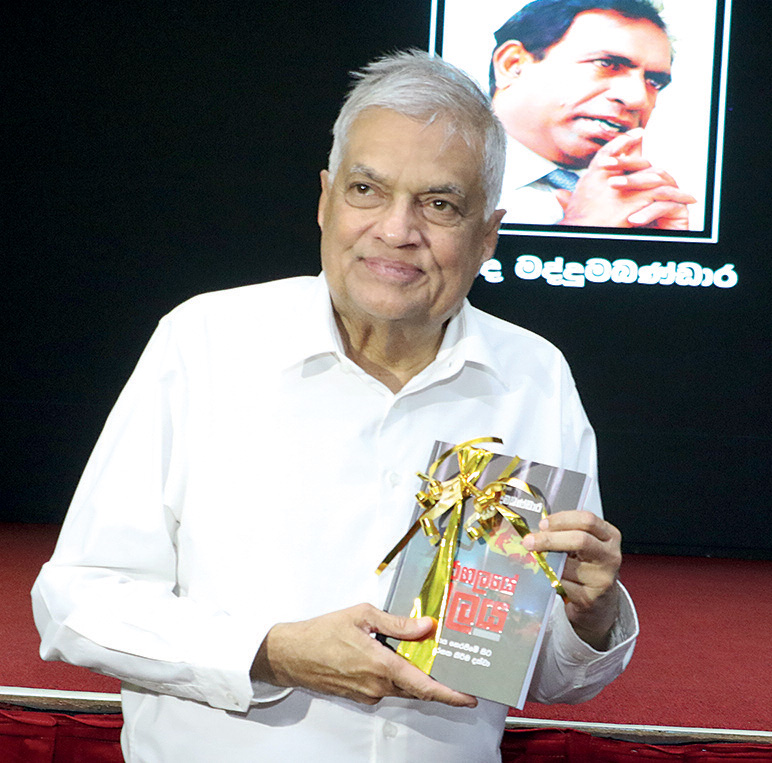
Ex-President Wickremesinghe with a copy of Aragalaye Balaya he received from its author, Prof. Professor Sunanda Maddumabandara, at the Sri Lanka Foundation recently (pic by Nishan S Priyantha)
On the basis of what Abeywardena had disclosed to him, Maddumabanadara also questioned the circumstances of the deployment of the elite Special Task Force (STF) contingent at the compound. The author asked whether that deployment, without the knowledge of the Speaker, took place with the intervention of Baglay.
Aragalaye Balaya
is a must read for those who are genuinely interested in knowing the unvarnished truth. Whatever the deficiencies and inadequacies on the part of the Gotabaya Rajapaksa administration, external powers had engineered a change of government. The writer discussed the issues that had been raised by Prof. Maddumabandara and, in response to one specific query, the author asserted that in spite of India offering support to Gotabaya Rajapaksa earlier to get Ranil Wickremesinghe elected as the President by Parliament to succeed him , the latter didn’t agree with the move. Then both the US and India agreed to bring in the Speaker as the Head of State, at least for an interim period.
If Speaker Abeywardena accepted the offer made by India, on behalf of those backing the dastardly US backed project, the country could have experienced far reaching changes and the last presidential election may not have been held in September, 2004.
After the conclusion of his extraordinary assignment in Colombo, Baglay received appointment as New Delhi’s HC in Canberra. Before Colombo, Baglay served in Indian missions in Ukraine, Russia, the United Kingdom, Nepal and Pakistan (as Deputy High Commissioner).
Baglay served in New Delhi, in the office of the Prime Minister of India, and in the Ministry of External Affairs as its spokesperson, and in various other positions related to India’s ties with her neighbours, Europe and multilateral organisations.
Wouldn’t it be interesting to examine who deceived Weerawansa and Thoradeniya who identified US Ambassador Chung as the secret visitor to the Speaker’s residence. Her high-profile role in support of the project throughout the period 31 March to end of July, 2022, obviously made her an attractive target but the fact remains it was Baglay who brought pressure on the then Speaker. Mahinda Yapa Abeywardena’s clarification has given a new twist to “Aragalaya’ and India’s diabolical role.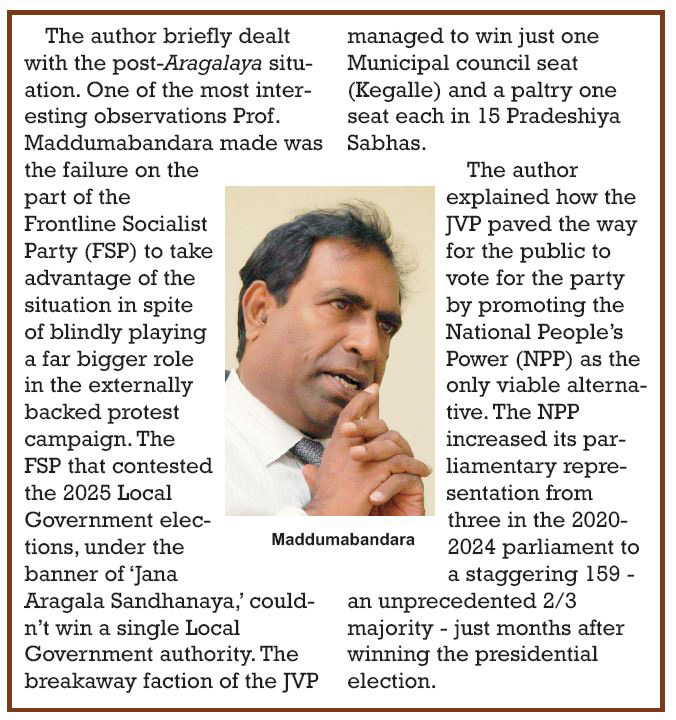
Absence of investigations
Sri Lanka never really wanted to probe the foreign backed political plot to seize power by extra-parliamentary means. Although some incidents had been investigated, the powers that be ensured that the overall project remained uninvestigated. In fact, Baglay’s name was never mentioned regarding the developments, directly or indirectly, linked to the devious political project. If not for Prof. Maddumabandara taking trouble to deal with the contentious issue of regime change, Baglay’s role may never have come to light. Ambassador Chung would have remained the target of all those who found fault with US interventions. Let me be clear, the revelation of Baglay’s clandestine meeting with the Speaker didn’t dilute the role played by the US in Gotabaya Rajapaksa’s removal.
If Prof. Maddumabandara propagated lies, both the author and Abeywardana should be appropriately dealt with. Aragalaye Balaya failed to receive the desired or anticipated public attention. Those who issue media statements at the drop of a hat conveniently refrained from commenting on the Indian role. Even Abeywardena remained silent though he could have at least set the record straight after Ambassador Chung was accused of secretly meeting the Speaker. Abeywardena could have leaked the information through media close to him. Gotabaya Rajapaksa and Ranil Wickremesinghe, too, could have done the same but all decided against revealing the truth.
A proper investigation should cover the period beginning with the declaration made by Gotabaya Rajapaksa’s government, in April 2022, regarding the unilateral decision to suspend debt repayment. But attention should be paid to the failure on the part of the government to decide against seeking assistance from the International Monetary Fund (IMF) to overcome the crisis. Those who pushed Gotabaya Rajapaksa to adopt, what they called, a domestic solution to the crisis created the environment for the ultimate collapse that paved the way for external interventions. Quite large and generous Indian assistance provided to Sri Lanka at that time should be examined against the backdrop of a larger frightening picture. In other words, India was literally running with the sheep while hunting with the hounds. Whatever the criticism directed at India over its role in regime change operation, prompt, massive and unprecedented post-Cyclone Ditwah assistance, provided by New Delhi, saved Sri Lanka. Rapid Indian response made a huge impact on Sri Lanka’s overall response after having failed to act on a specific 12 November weather alert.
It would be pertinent to mention that all governments, and the useless Parliament, never wanted the public to know the truth regarding regime change project. Prof. Maddumabandara discussed the role played by vital sections of the armed forces, lawyers and the media in the overall project that facilitated external operations to force Gotabaya Rajapaksa out of office. The author failed to question Wickremesinghe’s failure to launch a comprehensive investigation, with the backing of the SLPP, immediately after he received appointment as the President. There seems to be a tacit understanding between Wickremesinghe and the SLPP that elected him as the President not to initiate an investigation. Ideally, political parties represented in Parliament should have formed a Special Parliamentary Select Committee (PSC) to investigate the developments during 2019 to the end of 2022. Those who had moved court against the destruction of their property, during the May 2022 violence directed at the SLPP, quietly withdrew that case on the promise of a fresh comprehensive investigation. This assurance given by the Wickremesinghe government was meant to bring an end to the judicial process.
When the writer raised the need to investigate external interventions, the Human Rights Commission of Sri Lanka (HRCSL) sidestepped the issue. Shame on the so-called independent commission, which shows it is anything but independent.
Sumanthiran’s proposal
Since the eradication of the Liberation Tigers of Tamil Eelam (LTTE) in May 2009, the now defunct Tamil National Alliance’s (TNA) priority had been convincing successive governments to withdraw the armed forces/ substantially reduce their strength in the Northern and Eastern Provinces. The Illankai Thamil Arasu Kadchi (ITAK)-led TNA, as well as other Tamil political parties, Western powers, civil society, Tamil groups, based overseas, wanted the armed forces out of the N and E regions.
Abeywardena also revealed how the then ITAK lawmaker, M.A. Sumanthiran, during a tense meeting chaired by him, in Parliament, also on 13 July, 2022, proposed the withdrawal of the armed forces from the N and E for redeployment in Colombo. The author, without hesitation, alleged that the lawmaker was taking advantage of the situation to achieve their longstanding wish. The then Speaker also disclosed that Chief Opposition Whip Lakshman Kiriella and other party leaders leaving the meeting as soon as the armed forces reported the protesters smashing the first line of defence established to protect the Parliament. However, leaders of minority parties had remained unruffled as the situation continued to deteriorate and external powers stepped up efforts to get rid of both Gotabaya Rajapaksa and Ranil Wickremesinghe to pave the way for an administration loyal and subservient to them. Foreign powers seemed to have been convinced that Speaker Abeywardena was the best person to run the country, the way they wanted, or till the Aragalaya mob captured the House.
The Author referred to the role played by the media, including social media platforms, to promote Gotabaya Rajapaksa’s successor. Maddumamabandara referred to the Hindustan Times coverage to emphasise the despicable role played by a section of the media to manipulate the rapid developments that were taking place. The author also dealt with the role played by the Janatha Vimukthi Peramuna (JVP) in the project with the focus on how that party intensified its actions immediately after Gotabaya Rajapaksa stepped down.
Disputed assessment
The Author identified Ministers Bimal Rathnayaka, Sunil Handunetti and K.D. Lal Kantha as the persons who spearheaded the JVP bid to seize control of Parliament. Maddumabanda unflinchingly compared the operation, mounted against Gotabaya Rajapaksa, with the regime change operations carried out in Iraq, Libya, Egypt and Ukraine. Asserting that governments loyal to the US-led Western block had been installed in those countries, the author seemed to have wrongly assumed that external powers failed to succeed in Sri Lanka (pages 109 and 110). That assertion is utterly wrong. Perhaps, the author for some unexplained reasons accepted what took place here. Nothing can be further from the truth than the regime change operation failed (page 110) due to the actions of Gotabaya Rajapaksa, Mahinda Yapa Abeywardana and Ranil Wickremesinghe. In case, the author goes for a second print, he should seriously consider making appropriate corrections as the current dispensation pursues an agenda in consultation with the US and India.
The signing of seven Memorandums of Understanding (MoUs) with India, including one on defence, and growing political-defence-economic ties with the US, have underscored that the JVP-led National People’s Power (NPP) may not have been the first choice of the US-India combine but it is certainly acceptable to them now.
The bottom line is that a democratically elected President, and government, had been ousted through unconstitutional means and Sri Lanka meekly accepted that situation without protest. In retrospect, the political party system here has been subverted and changed to such an extent, irreparable damage has been caused to public confidence. External powers have proved that Sri Lanka can be influenced at every level, without exception, and the 2022 ‘Aragalaya’ is a case in point. The country is in such a pathetic state, political parties represented in Parliament and those waiting for an opportunity to enter the House somehow at any cost remain vulnerable to external designs and influence.
Cyclone Ditwah has worsened the situation. The country has been further weakened with no hope of early recovery. Although the death toll is much smaller compared to that of the 2004 tsunami, economic devastation is massive and possibly irreversible and irreparable.
By Shamindra Ferdinando
Features
Radiance among the Debris
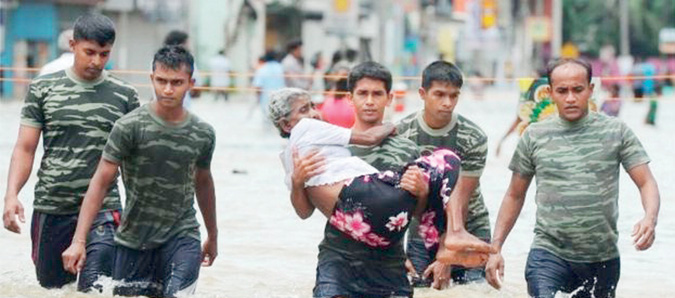
Over the desolate watery wastes,
Dulling the glow of the fabled Gem,
There opens a rainbow of opportunity,
For the peoples North and South,
To not only meet and greet,
But build a rock-solid bridge,
Of mutual help and solidarity,
As one undivided suffering flesh,
And we are moved to say urgently-
‘All you who wax so lyrically,
Of a united nation and reconciliation,
Grab this bridge-building opportunity.’
By Lynn Ockersz
-

 Features4 days ago
Features4 days agoFinally, Mahinda Yapa sets the record straight
-

 News6 days ago
News6 days agoOver 35,000 drug offenders nabbed in 36 days
-

 News5 days ago
News5 days agoCyclone Ditwah leaves Sri Lanka’s biodiversity in ruins: Top scientist warns of unseen ecological disaster
-
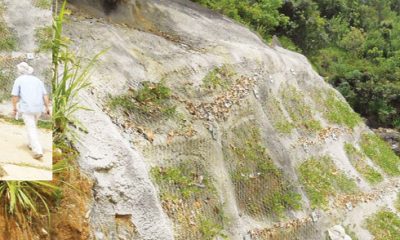
 Features7 days ago
Features7 days agoThe Catastrophic Impact of Tropical Cyclone Ditwah on Sri Lanka:
-

 News6 days ago
News6 days agoRising water level in Malwathu Oya triggers alert in Thanthirimale
-

 Features4 days ago
Features4 days agoHandunnetti and Colonial Shackles of English in Sri Lanka
-

 Business2 days ago
Business2 days agoCabinet approves establishment of two 50 MW wind power stations in Mullikulum, Mannar region
-

 Business6 days ago
Business6 days agoSri Lanka betting its tourism future on cold, hard numbers




